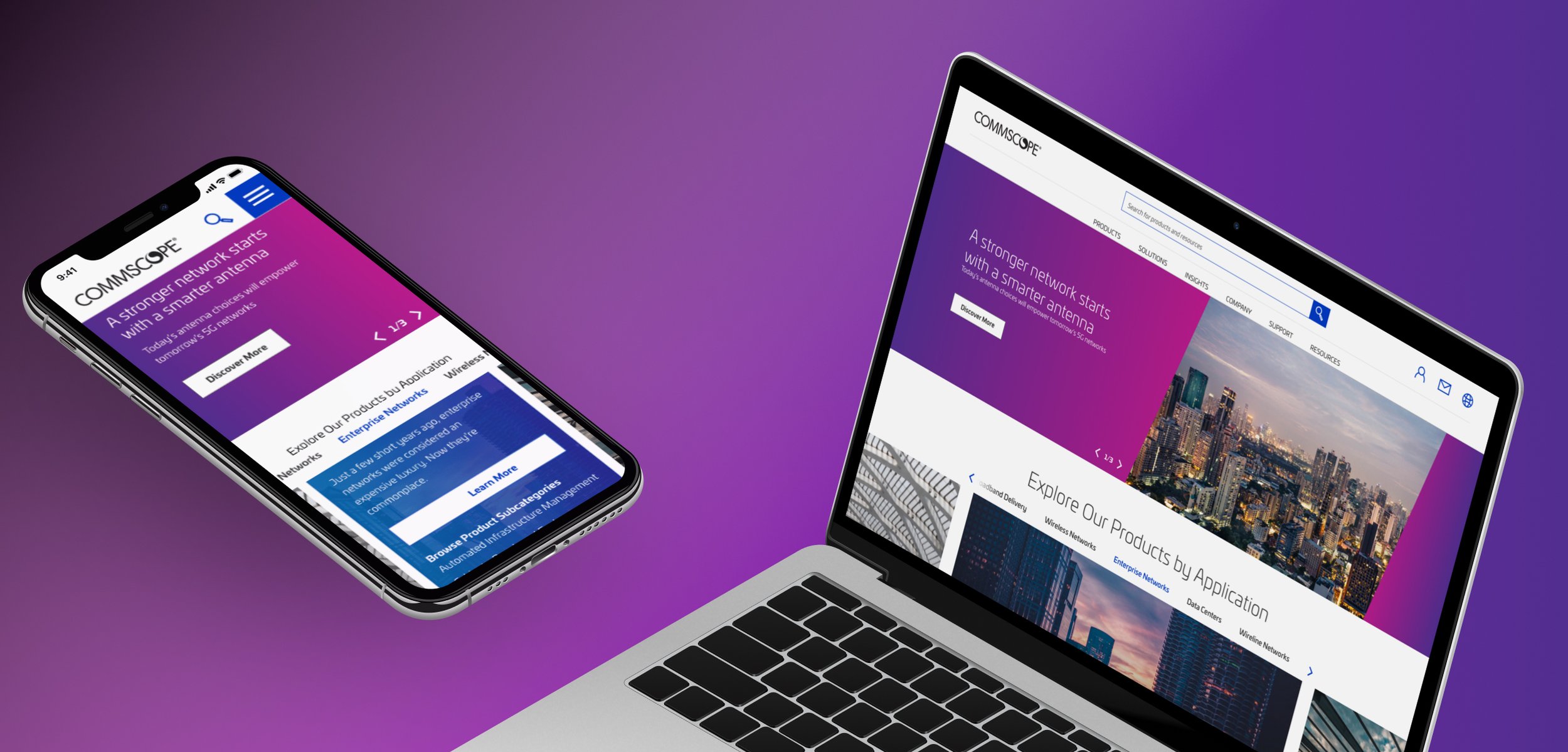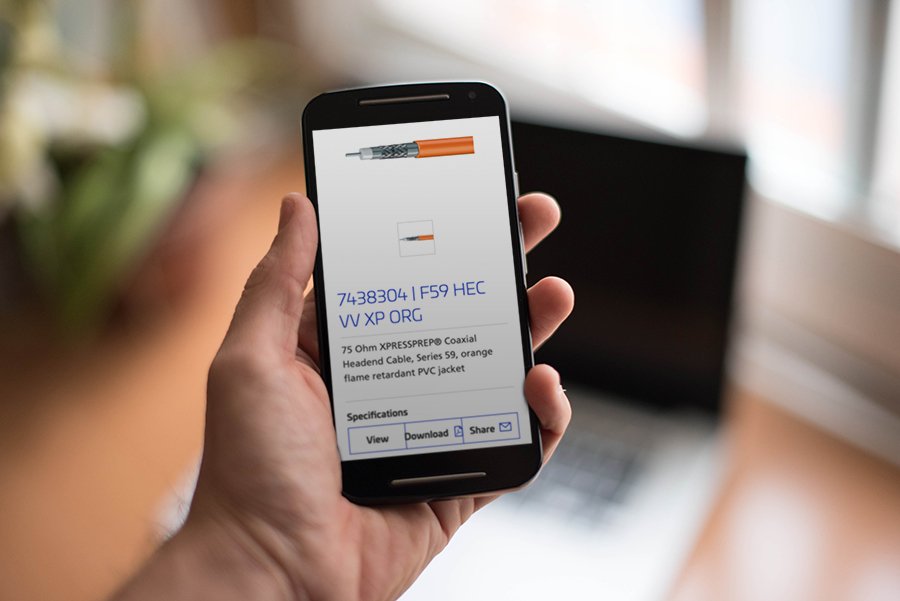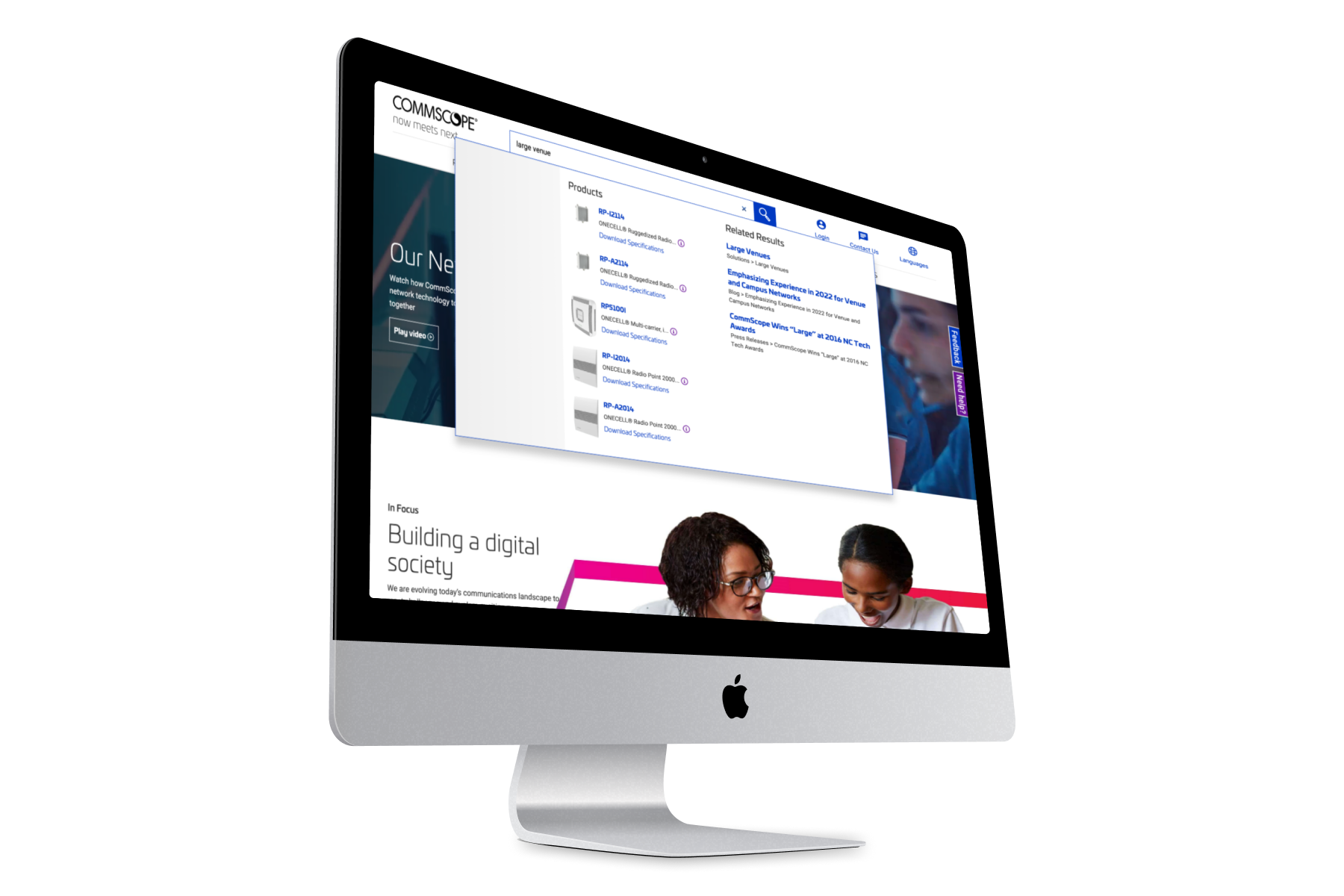Increasing customer self-service with a powerful search experience.
CommScope partnered with The C2 Group to develop a search-driven user experience consolidating three brands into one unified experience on Optimizely (Episerver) Digital Experience Cloud (DXC).
I conducted research, wrote copy, and produced all of the graphics for a website redesign case study on a global telecommunications company. It has been regularly referenced in sales calls and often highlighted as the call-to-action for reaching out to The C2 Group.
The Challenge.
Helping companies of all sizes and complexities design, build, and manage their wired and wireless solutions, CommScope's site experience needed to account for how customers search for information and make buying decisions. The IA poorly distributed product data and resources across the site, which was a manual effort and discouraging experience for users looking for complete product information and related products that work together in a solution or application.
CommScope required a platform with the capacity, scalability, and deliverability to manage 100,000+ products and quickly connect customers to relevant content and product information. Additionally, it needed to integrate with leading back-office systems, offer transactional ecommerce capabilities for both B2B and B2C audiences, and provide a unique and effortless customer experience. Internally, the CMS needed to afford the CommScope team the ability to manage robust workflow processes and easily reuse its diverse content.



The Solution.
Acting as a central hub for CommScope’s portfolio of leading networking solutions, the new CommScope.com is powered by Optimizely's DXP. By leveraging a cloud-hosted and managed platform, CommScope is better able to meet performance, scale, and support needs in the future. Seamless integrations with Informatica PIM and Digizuite DAM syndicate CommScope’s product catalog and marketing content across channels to deliver a unified, consistent experience. Advanced search, management, sharing, and repurposing of content is now possible from a single source for content editors.
Due to the complex nature of CommScope’s catalog, customers needed a browsing experience that enables self-service and education. Optimizely’s enterprise search solution was configured to index and surface relevant products and content across the unified brands so users could easily find and learn about their sought-out solution or application. Intuitive filter options, product and rich-content results, and intelligent recommendations offer customers additional ways to achieve their goals quicker than before. In addition to more intelligent search capabilities, improved navigation helps route visitors in an optimized format that anticipates how differing users think and browse.
Since deploying Optimizely, CommScope has increased self-service and customer satisfaction while simultaneously improving the efficiency of its internal marketing processes to deliver multi-faceted digital experiences.
Tight, back-office system integrations.
On top of introducing a new CMS, product information management (PIM) and digital asset management (DAM) implementations running in parallel would require strong coordination between C2 and supporting vendors. CommScope's deep product catalog and expansive digital assets library would put site and integration performance to the test.
3-to-1 brand website consolidation.
Late-project acquisitions of the ARRIS and Ruckus brands required C2 to revisit its project approach. With extreme agility and efficiency, C2 had to ensure the moderately-finished build could support and sustain the functionality and content needs of additional users with differing site flows and goals.
Now a consolidation effort, three separate brand sites needed to be presented in one seamless and unified digital experience.
Ease of web publishing and internationalizing content.
For content managers and marketers, the ability to produce and publish on-brand content is faster than ever before, with capabilities to add or omit language-specific blocks in eight different languages for its international audiences.




